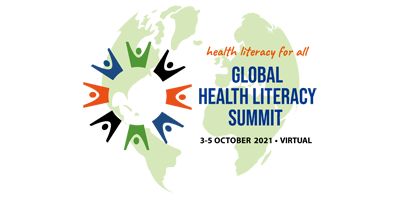Abstract Preview
Abstract
|
Title Using cluster analysis to reveal health literacy patterns to inform actions to address health inequities |
|
Type Oral Presentation Only |
|
Theme Global Health Literacy Summit 2021 |
|
Topic Health literacy and health equity |
Authors
|
Main Author Christina Cheng1 |
|
Presenting Author Christina Cheng1 |
|
Co-Author Roy Batterham1 Shandell Elmer1 Richard Osborne1 |
Authors' Institution
|
Department / Institution / Country School of Health Sciences / Swinburne University of Technology / Australia1 |
|
Abstract Content (abstracts should be written in Size 11 font, Arial font style) Background As a strategy to achieve health equity, the health literacy needs of people must be appropriately identified to inform intervention development. Using mean scores to describe the health literacy of populations groups ignores different strengths, limitations and preferences among population subgroups. This study used cluster analysis to gain insights into health literacy patterns in two population groups. Methods The Australian Bureau of Statistics National Health Survey (2017-2018) applied the Health Literacy Questionnaire (HLQ) in a nationally representative survey. The HLQ’s 9 domains capture people’s determinants and ability to access and use health information and services. Subgroups of different health literacy patterns within two population groups (New South Wales (NSW) and Victoria) were identified using hierarchical cluster analysis with Ward’s method for linkage based on the 9 scales of the HLQ. The two sets of patterns were then compared. Results The total number of respondents for NSW and Victoria was 1,018 and 923 respectively. The mean scores for the 9 HLQ scales for the two populations were very similar. A 11-cluster solution for NSW and a 12-cluster solution for Victoria were identified. For NSW, at least 80% of the population displayed limitations in one or more health literacy domains while for Victoria it was 75%. Comparing the clusters, there were 6 clusters with similar health literacy patterns in both population groups. However, NSW had 5 unique patterns and Victoria had 6 unique patterns representing subgroups experiencing different combinations of health literacy challenges. Conclusions This study demonstrates that a one-size-fits-all average score approach across and within a country misses potentially critical information. Traditional descriptive analysis seeks to present averages and does not embrace patterns of strengths, limitations and preferences in individuals across health literacy domains. By comparison, actions/interventions informed on a cluster analysis take account of the unique context and needs of subgroups. To ensure that no-one is left behind, health literacy research must identify the different needs of subgroups so that tailored actions can be developed to support health equity. |
Requires Audio or Video system for Presentation?: No
